Electric heating in a private house: how to heat a home
Electricity - one of the most expensive types of energy, but despite this, some owners of country cottages for various reasons, choose it as the main source of heat for their home. Especially since knowing some secrets and nuances can significantly reduce the cost of utilities. How to make electric heating of a private house with your own hands and do not go bankrupt in its operation, read on.
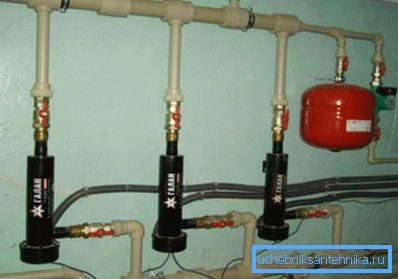
Independent installation of the climate network
Choosing the right system
A simple analysis of various heating schemes used in individual construction shows that the most profitable water heating of a private house is with electricity.
In this case, an electric boiler is used to heat the liquid (water or antifreeze), which then goes through the pipes to the radiators of the heating and gives out the accumulated heat energy to the air in the room. To ensure greater efficiency, an electric pump can be included in the circuit, which accelerates the circulation of coolant.
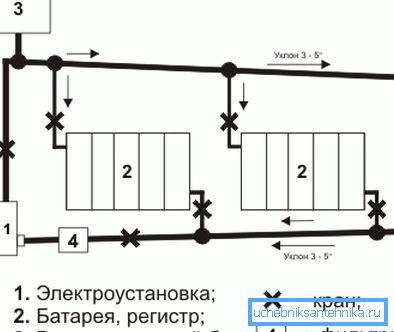
Such a heating system is easy to install and operate. Installation does not require special skills and special permissions. You just need to make sure that the existing wiring and trunk lines will withstand the load from the connection of the boiler of your choice.
Electric water heating system of a private house consists of the following elements that must be purchased before you make your own climate system:
| Device | Description |
| Electric boiler | The power of this device depends on the area of heated premises, possible heat losses and several other factors. To calculate the amount of thermal energy required for heating, there are special formulas. |
| Circulation pump | Such equipment not only reduces the inertia of the system, allowing the house to heat up in a shorter time, but also saves electricity, increasing the heat transfer of the climate network as a whole. |
| Bypass | It is installed together with the pump. Required to organize the flow of fluid in case of breakdown of electrical equipment. |
| Expansion tank | It is mounted in the water heating system to compensate for the pressure when the fluid is heated. It is recommended to buy closed type containers with a membrane. Although their price is somewhat higher, they help to avoid loss of coolant and can be placed not at the top of the system, but on the pipe that supplies water to the boiler. |
| Pipelines | Required for the transport of coolant from the boiler to the radiator. They also connect all the other elements of the system. Polymer pipes are excellent for the system under consideration. If you decide to make a hidden gasket, you need to take parts from metal-plastic or cross-linked polyethylene. |
| Floor heating | This is an optional element of the heating system, but it helps to significantly save electricity. In the described case, the air is heated by radiators, and the “warm floor” that requires less electricity is responsible for maintaining a comfortable temperature. |
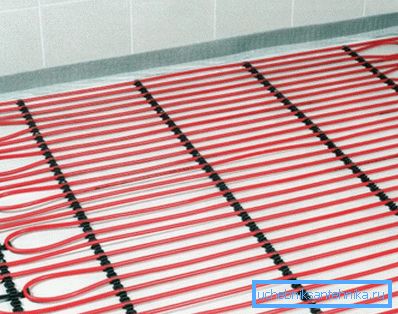
Note! Heating in a private house with electricity is completely dependent on the availability of voltage in the sockets. Therefore, when an emergency power outage the home will be left without heat. To avoid this, you can purchase a combined heating equipment operating on several types of fuel. So you can temporarily run the boiler on diesel or wood, waiting for the arrival of the repair team of electricians in the heat.
Installation of climate network elements
Instructions for designing a heating system is quite simple.
Installation works are as follows:
- Installation of an electric heating boiler. There is no wisdom here, except for the choice of power. It is better for this parameter to be calculated by an expert, but the general recommendation is: 18 m3 Heated area requires 1 kW of thermal energy. It is advisable to adhere to the following tips:
- when installing the equipment on the floor or hanging on the wall, it is necessary to use a water or laser level, otherwise the liquid will be unevenly distributed in the heat exchanger, as a result of which it may boil and intensive formation of mineral deposits on heating elements;
- it is necessary to install shut-off valves on the inlet and outlet nozzles (it will allow switching off the boiler without draining the coolant);
- Connecting the boiler to the electrical network is necessary with the use of a cable of a suitable cross-section (preferably multicore).
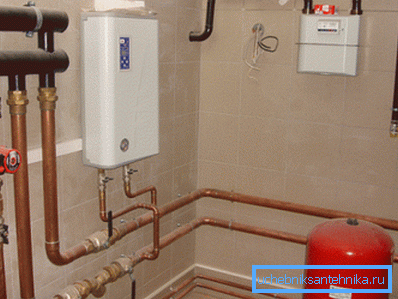
Note! Before connecting the boiler it is necessary to make sure that the meter you have allows for the transfer of this amount of energy. Powerful climatic equipment (more than 10 kW) requires a three-phase current. Take care of this in advance by contacting the organization that supplies electricity.
- Installation of the circulation pump for the heating system. It is installed next to the boiler on the pipe supplying the coolant that has already cooled down (the so-called return flow). This allows you to extend the life of electrical equipment, as it will pump water at a lower temperature. It is desirable to place the pump close to the outlet in the same room with the boiler. So it will be easier to maintain all the equipment.
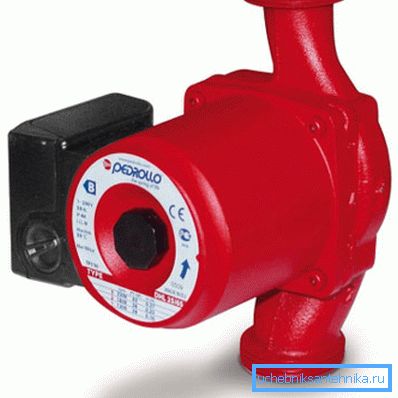
If you plan to install floor heating systems, you must install a pump on this circuit that works independently of the main one so that you can adjust the parameters of their work separately from each other.
- Bypass insert. This bypass section of pipes allows you to organize the flow of fluid in the system, bypassing the circulation pump. In the event of a breakdown of the latter, the climate network will operate according to the gravitational principle until such time as the problems are resolved. The bypass itself and the ends of the pipes to which the pump is connected should be equipped with ball valves.
- Installation of main risers and connections to radiators. In the first case, parts are used in sizes from 32 to 40 mm, in the second - from 20 to 24. Docking with radiators is performed using special sgons - “American women”. Connection scheme may be different. It depends on the area of heated premises and the total length of the heating pipelines.
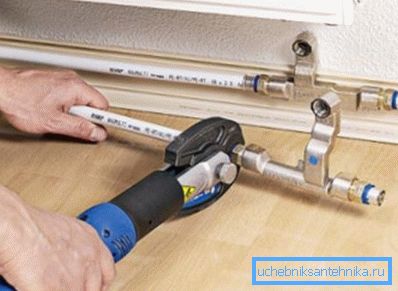
Tip! Before installing the system, it is necessary to correctly calculate its hydraulic resistance. Special computer programs will help. Otherwise, water in pipes and radiators will not flow in the right direction, which will force you to start work from scratch.
- Construction of water heated floors. Although this element of the system, strictly speaking, is not mandatory, its installation in heating systems with an electric boiler helps to save considerably on utility bills. The flow of coolant into the pipes under the floor can be arranged by tapping into the overall system or equipping an additional circuit. The latter option is preferable, as it allows you to more accurately regulate the microclimate in the house.
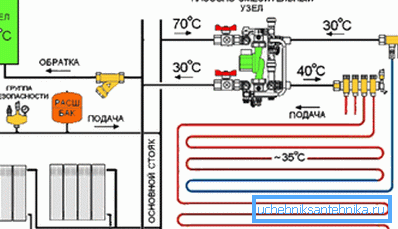
The heating system of a private house - electric or any other - will be more economical if you plan to install mechanical, and better electronic, temperature controllers that change the modes of operation of the boiler and the circulation pump depending on the temperature outside and in the house. In this case, energy will be spent more economically.
Features and secrets
Let us dwell on some of the nuances, the observance of which allows you to make a heating system with the use of electricity as comfortable, ergonomic and economical:
- connection of all electrical appliances is carried out with a disconnected electrical circuit;
- each heating radiator must be equipped with an air valve (a Mayevsky crane) that will be needed to remove air plugs from the heating system that formed there after pouring the coolant;
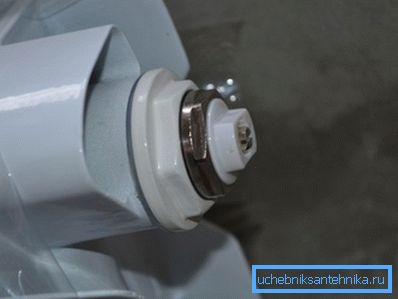
- if you decide to install an open expansion tank in the heating system, it must be mounted at the highest point of the system - in the attic of the house;
- To make your electric heating system fully autonomous, it is advisable to purchase and install a diesel generator of the required power, which will be switched on when there is a break in the electrical network.
At the end of the installation, it is necessary to pressurize the heating circuits. To do this, use a special pneumatic device, but you can do without it. You should simply start the system into operation with a fluid pressure slightly higher than the calculated one, and let it work for at least 24 hours. During this time, any shortcomings and defects in the installation will be revealed.
Conclusion
The electric heating system is very easy to install and an effective way to heat the rooms. However, you can’t take it as economical. To reduce costs, it is recommended to install boilers operating on several types of fuel in the house. See the video for more details.